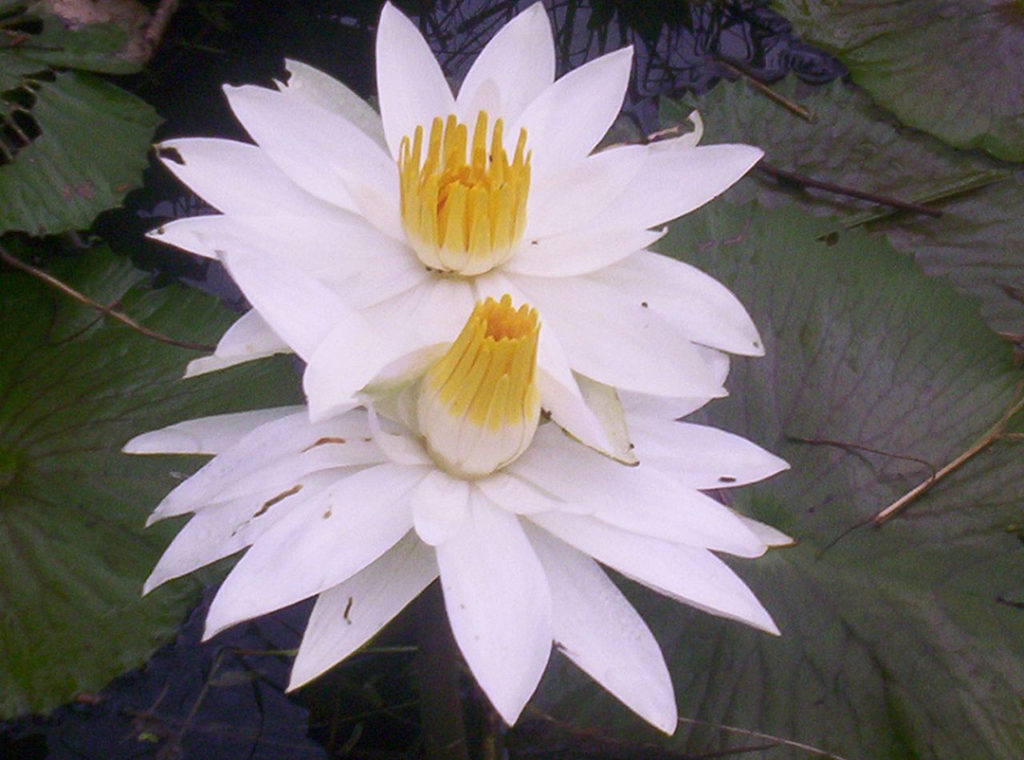
Egypt
Lotus
Nymphaea lotus and Nymphaea caerulea

General Description / Cultural Significance
The most culturally significant scent in Egypt is that of the Lotus flower, Nymphaea lotus and Nymphaea caerulea, perennial plants that are native to the country. In Egyptian culture, the flowers, leaves, and stems have long been used as enhancers of sexual health, vigor, and healing. As an aphrodisiac, it has always been a symbol of fertility, dating back to the time of pharaohs, and is associated with sex and rebirth. Nymphaea lotus is a white, sometimes slightly pink water-lily that survives best in calm, shallow aquatic habitats. It floats on water and blossoms above it, emitting a soft, sweet, fruity scent. Egyptians have extracted this scent from the flower to use in perfume since ancient times. The lotus was also used as offerings in temples and its portrayal, tied to its use in religious rituals, was depicted on frescos within tombs found in Luxor dating back to the 1300s, and on early papyrus scrolls. There are fresco images that portray women wearing garlands of lotus petals and carrying vases containing lotus flowers.
This beautiful flower is highly appreciated for its aesthetics and symbolism. However, it is much more than ornamental, as it is also greatly prized for its fragrance, as well as its medical and edible properties. Its roots are boiled and eaten as vegetables, or ground up and used in porridge. Its stem and seeds are also edible. The lotus has also been used for its medicinal properties since ancient times in Egypt, as well as in other countries, as it has tranquilizing effects. The tea made from the plant is famed for its ability to produce euphoric feelings, and even ecstasy. The root can also treat fevers and insomnia, and the seeds are an old cure for diabetes.
Climate Change/Conservation Status
The world-famous Nile Delta, a densely populated and vulnerable low-lying area, is losing sediment to build up its basin. The Mediterranean Sea is rising, and it is thought that the delta could become completely submerged within the next fifteen years. Crops in the region are already suffering from underground salinity that is seeping into the soil. To mediate the situation, farmers are adding expensive fertilizers to prop up crop output, which is further complicating problems. This situation was made worse after the construction of the Aswan Dam in 1970, stopping the annual Nile floods, which would fill the delta with freshwater and dilute the salty water from the Mediterranean. As a result, Egypt’s water needs are rising and not adequately addressed.
Pollution has been a growing problem in Egypt, but some progress has been made to limit it by reducing fuel subsidies. Under the country’s 2030 vision plan, it has committed to producing 20% of its energy from renewable sources by 2022 and 42% by 2035.
Unfortunately, Egypt’s overuse of fertilizers, extreme weather patterns, and increasing insect infestations have had damaging effects on the lotus flowers, dramatically reducing their cultivation and harvest. Even though the species of water-lily has the highly adaptive ability to sustain itself with its deep rhizomes and control over its own respiration during hot periods, Nymphaea lotus is currently in population decline. According to the IUCN, this is a result of both disturbance from agricultural practices, as well as pollution that leads to ecosystem degradation. The lotus can only grow in water with low pH, and suitable sediment, and when this delicate balance is interrupted, there is a huge threat posed to the species.
Alternate Names
Blue Lily of the Nile
Blue lotus
Cow cabbage
Egyptian white water-lily
Pond lily
Sweet-scented pond lily
Sweet-scented water lily
Sweet water lily
Tiger lotus
Toad lily
Water cabbage
White Egyptian lotus
White lotus
Wild pond lily
Sources
Ahmed, M.T., & Hefny, M., 2003. Climate Change and Tourism An Egyptian Perspective. [ebook] Ismailia: Suez Canal University.
al-Dawar, K., 2018. Egypt’s fertile Nile Delta threatened by climate change. France 24. [website]
Arraf, J., 2017. In Egypt, A Rising Sea — And Growing Worries About Climate Change’s Effects. NPR. [website]
Donovan, D., 2015. Egypt’s Coming Climate Calamity. U.S. World News and Report. [website]
El-Gabbas, A., et. al., 2016. Conserving Egypt’s reptiles under climate change. Journal of Arid Environments, [website] 127, pp.211-221.
Majumder, M., & Barman, R.N., 2012. “Impact of Climate Change on Selection of Sites for Lotus Cultivation”. Application of Nature Based Algorithm in Natural Resource Management, pp 119-134. Springer Science and Business Media. DOI: 10.1007/978-94-007-5152-1
Minister and Charge d’ Affaires, Mission of the Arab Republic of Egypt to the United Nations. This statement can be found on the World Sensorium original website.
Nicoll, K., 2004. Recent environmental change and prehistoric human activity in Egypt and Northern Sudan. Quaternary Science Reviews, [website] 23(5-6), pp.561-580.
UNEP, 2018. How climate change and population growth threaten Egypt’s ancient treasures. United Nations Environment Programme. [website]

